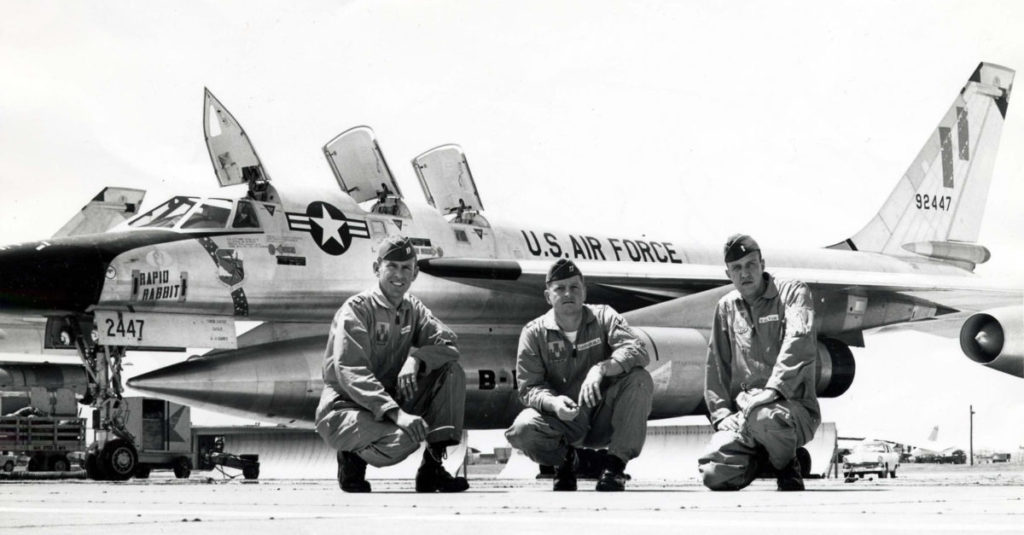

America has seen some supersonic strategic bombers serve. Notable among these is the FB-111A Switchblade and the B-1B Lancer. But one bomber blazed the trail for these speedsters with a pretty huge payload.
The Convair B-58 Hustler was the first operational supersonic strategic bomber in American service. Aviation historian Joe Baugher noted that Strategic Air Command was looking for a high-performance bomber.

The B-58 made its first flight in 1956, but didn’t enter service with the Strategic Air Command until 1960, due to a number of hiccups, and wasn’t ready to stand alert until 1962. However, when the supersonic strategic bomber entered service with the 43rd Bomb Wing, it was soon proving it had a lot of capability.
However, in 1961 and 1962, even as it dealt with the teething problems, it set numerous aeronautical records. The plane had a top speed of Mach 2.2 at high altitude, a maximum range of 4100 nautical miles, could carry five nuclear bombs (it never had a conventional weapons capability), and reached an altitude of 85,360 feet.
It also had a M61 Vulcan cannon in the tail with 1,200 rounds of awesome.

A 1981 Air University Review article outlined that the Hustler had a lot of problems. To load the weapons, the plane actually needed to be de-fueled and then re-fueled. And before the loading, the ground crews would need to hand a four-ton weight on the Hustler’s nose. Forget that step, and the plane would tilt back onto its tail.
Maintenance crews also came to dislike the plane, due to the complexities the plane’s high technology imposed on them.
The plane’s teething problems, the development of surface-to-air missiles like the SA-2 Guideline, and the increasing costs killed hopes for newer versions, especially since the B-58 was optimized for high-altitude operations.
One of the proposed new versions, the B-58B, was to add significant conventional capabilities to the Hustler. Proposed passenger/cargo versions never took off, either, and a planned export sale to Australia didn’t happen (the Australians did eventually get the F-111).

Ultimately, the B-58 was retired, and replaced by the FB-111A. The FB-111A not only was supersonic, but it was able to operate at low altitudes and carry conventional bombs – addressing the B-58’s two shortcomings.
Most B-58s went to Davis-Monthan Air Force Base where they entered the boneyard and were eventually scrapped.
